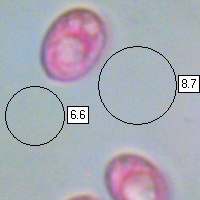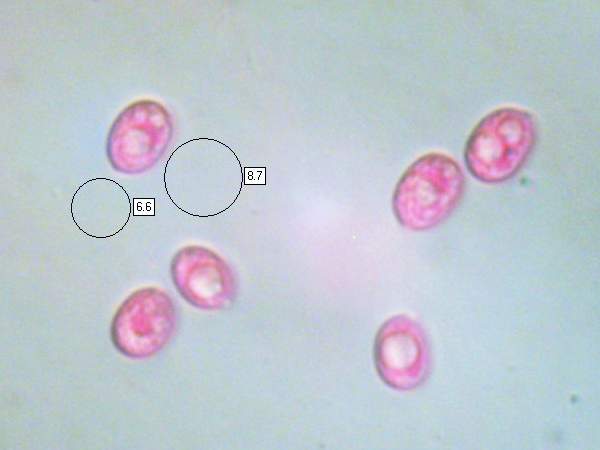Mycena polygramma (Bull.) Gray - Grooved Bonnet
Phylum: Basidiomycota - Class: Agaricomycetes - Order: Agaricales - Family: Mycenaceae
Distribution - Taxonomic History - Etymology - Identification - Toxicity - Reference Sources
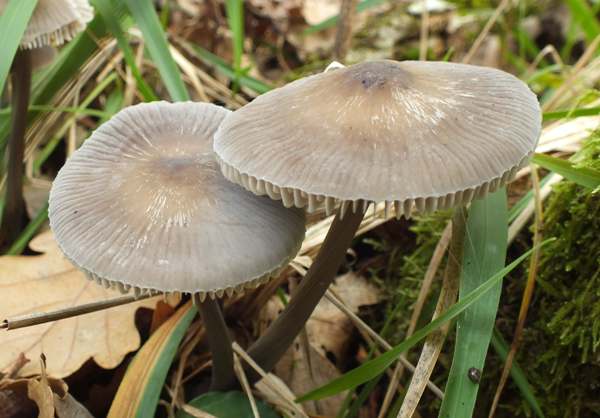
Cap colour is rarely of much help when you are struggling to identify a Mycena, as they vary so much with age, location, humidity and growing substrate. If you look closely at the stem of a Grooved Bonnet you will see that it has longitudinal striations, whereas other common bonnet mushrooms have smooth stems.
Unlike several many of its more gregarious lookalikes, Mycena polygramma quite often fruits as singletons or in small groups, although substantial tufts do also occur occasionally.
These mushrooms are reported to be slightly bioluminescent (the gills glow in the dark), although their ghostly greenish light emissions are usually far too weak to be visible to the human eye in a normal woodland environment, even on a moonless night. To see this effect it is necessary to sit close to some of the mushrooms in total darkness (in a windowless room) until your eyes have become accustomed to the dark and your pupils are fully dilated. The Honey Fungus Armillaria mellea is a stronger emitter of bioluminescence, but perhaps the best known glowing mushroom is Omphalotus illudens, commonly known as Jack O' Lantern.
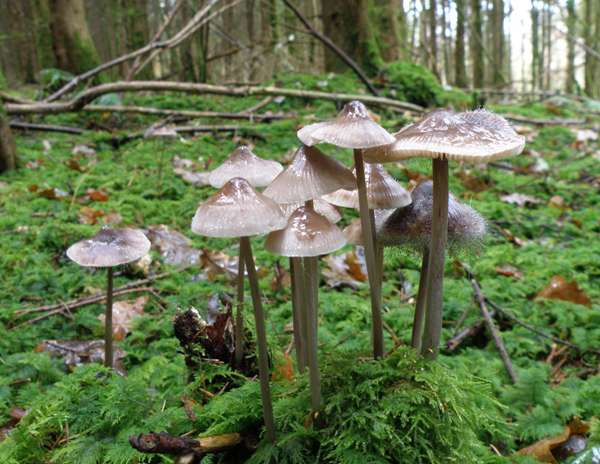
Distribution
Common throughout Britain and Ireland, the Grooved Bonnet is also found on the mainland of Europe and very occasionally also in North America.
Taxonomic history
The basionym of this species was defined when, in 1789, Jean Baptiste Francois (Pierre) Bulliard described this species and gave it the name Agaricus polygrammus. (Most of the gilled mushrooms were included initially in a gigantic Agaricus genus, since largely dismantled with most of its contents distributed across otther new genera.) The currently-accepted scientific name of the Grooved Bonnet dates from 1821, when British mycologist Samuel Frederick Gray (1766 - 1828) transferred this woodland mushroom to the genus Mycena, thus making its scientific name Mycena polygramma .
Synonyms of Mycena polygramma include Agaricus polygrammus Bull., Agaricus chloroticus Jungh, Mycena polygramma f. candida J. E. Lange, and Mycena polygramma f. pumila J. E. Lange.
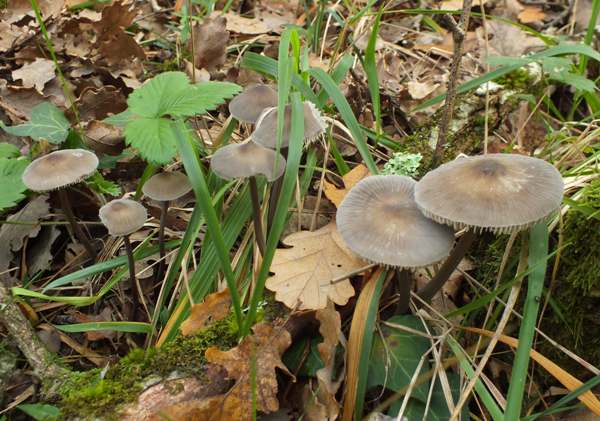
Etymology
The specific epithet polygramma come from Latin words poly meaning many and gramma meaning a sign, mark or line. It is a reference to the many grooves or lines running down the stems of these woodland mushrooms.
Identification guide
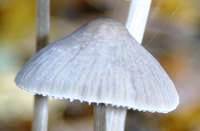 |
Cap2 to 3.5cm across; conical, becoming bell shaped and eventually umbonate; smooth with striations almost to centre; margin scalloped or sharply toothed; various tones of greay or greyish brown, becoming darker brown towards centre. |
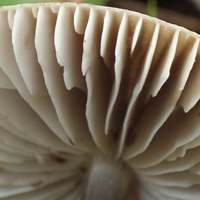 |
GillsAdnate; white turning pinkish-grey when fully mature. |
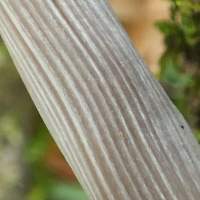 |
Stem5 to 10cm long and 0.2 to 0.4cm in diameter; white at the apex, progressively darker red-brown towards the downy base; longitudinally grooved, often very obviously but sometimes only faintly; no ring. |
SporesEllipsoidal, 7.5-10 x 5-7μm; amyloid. Spore printWhite. |
|
Odour/taste |
Not distinctive. |
Habitat & Ecological role |
Saprobic, nearly always on dead hardwood stumps or on rotting trunks and large branches; only very occasionally on rotting conifers. |
Season |
June to November in Britain and Ireland. |
Similar species |
There are many other small, bell-shaped fungi in the Mycena genus including Mycena inclinata and Mycena arcangeliana; however, the grooved stem of Mycena polygramma is a distinguishing feature. |
Toxicity
Mycena polygramma may contain the deadly toxin muscarine, albeit in low concentrations; it must therefore be considered inedible and potentially poisonous. Do not eat these toxic toadstools!
Reference Sources
Fascinated by Fungi, 2nd Edition, Pat O'Reilly 2016, reprinted by Coch-y-bonddu Books in 2022.
Penny Cullington, (Oct. 2013). British Mycenas - Brief Descriptions.
Giovanni Robich, (2003). Mycena d'Europa; Associazione Micologica Bresadola ; Vicenza : Fondazione Centro Studi Micologici.
British Mycological Society. English Names for Fungi
Dictionary of the Fungi; Paul M. Kirk, Paul F. Cannon, David W. Minter and J. A. Stalpers; CABI, 2008
Taxonomic history and synonym information on these pages is drawn from many sources but in particular from the British Mycological Society's GB Checklist of Fungi.
Fascinated by Fungi. Back by popular demand, Pat O'Reilly's best-selling 450-page hardback book is available now. The latest second edition was republished with a sparkling new cover design in September 2022 by Coch-y-Bonddu Books. Full details and copies are available from the publisher's online bookshop...
